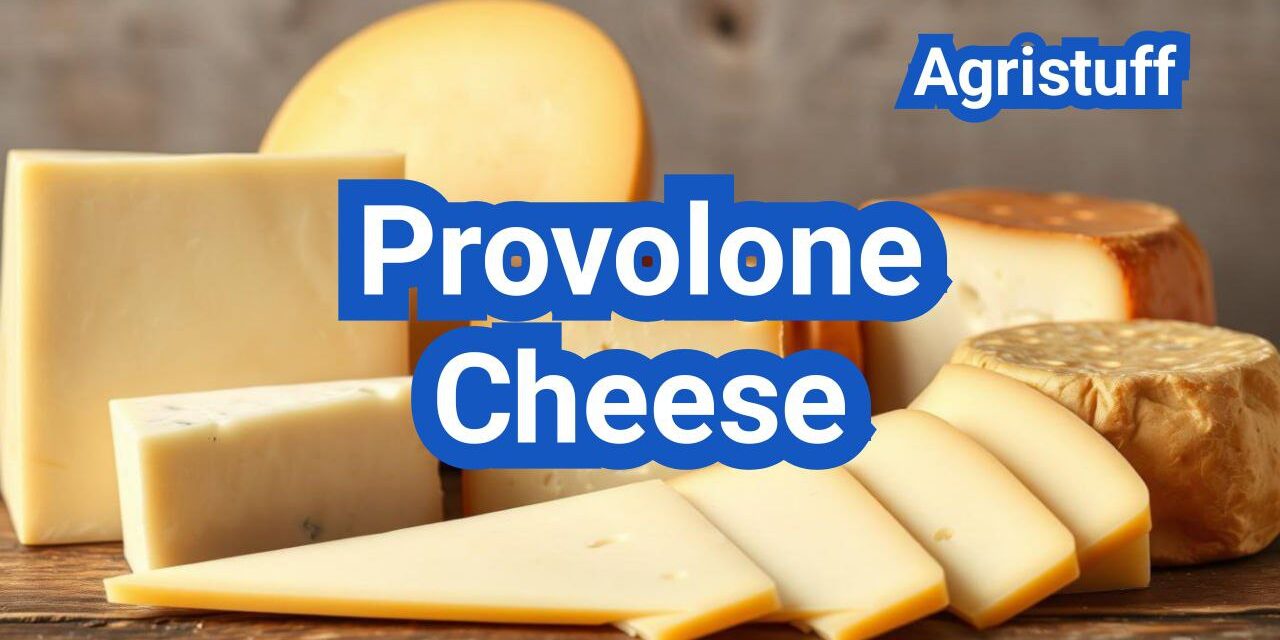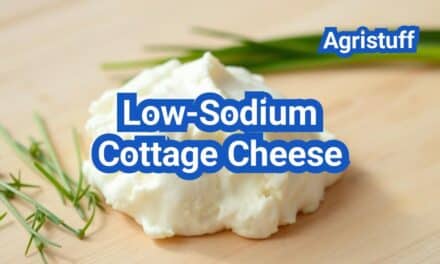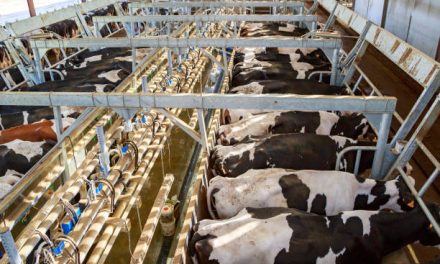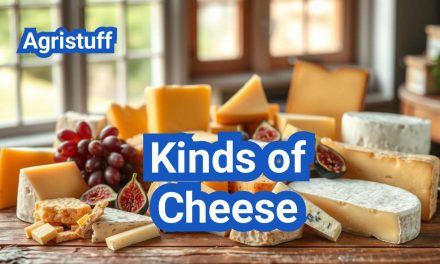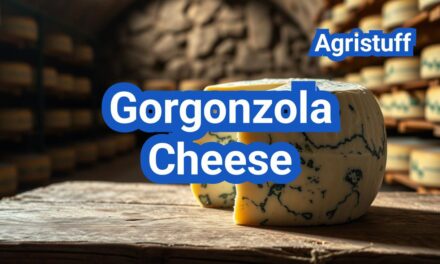Provolone, an Italian semi-hard cheese, has been a staple in Italian cuisine for centuries. Known for its smooth texture and mild flavor, it is a versatile ingredient used in various dishes.
This beloved cheese is not only a favorite among cheese enthusiasts but also a crucial component in many recipes, from pizzas to sandwiches. Its rich history and diverse types, such as Provolone Dolce, make it a significant part of Italian culinary tradition.
Key Takeaways
- Provolone is a type of Italian semi-hard cheese.
- It is used in various culinary applications.
- Provolone has a rich history and diverse types.
- Provolone Dolce is one of its notable varieties.
- It is a crucial ingredient in many Italian dishes.
The Rich History and Origin of Provolone Cheese
Provolone, a cheese with a history as rich as its flavor, has been a cornerstone of Italian gastronomy for centuries. Its origins are deeply rooted in the southern regions of Italy, particularly in the area around Naples.
Italian Roots: The Birth of Provolone
The story of provolone begins in the 12th century when it was first produced in Southern Italy. The name “provolone” is derived from the Italian word “provola,” which refers to a type of cheese. Initially, it was made from cow’s milk, and its production was limited to specific regions.
As quoted by a renowned cheesemonger,
“Provolone is not just a cheese, it’s a testament to Italian culinary tradition and the art of cheesemaking.”
Evolution and Global Spread
Over the centuries, provolone cheese has undergone significant transformations, adapting to changing tastes and production techniques. Its popularity spread beyond Italy, and it became a staple in many cuisines around the world.
Key factors in its global spread include:
- Migration of Italian cheesemakers
- Advancements in dairy technology
- Increasing demand for Italian cuisine worldwide
Cultural Significance in Italian Cuisine
In Italian cuisine, provolone is more than just a cheese; it’s an integral part of the country’s culinary identity. It’s used in various dishes, from antipasto to pasta fillings, and is often served as a table cheese.
The distinction between provolone dolce and provolone piccante highlights the diversity within this cheese family. While dolce is mild and sweet, piccante is sharper and more pronounced, catering to different tastes and culinary applications.
Understanding Provolone Cheese Varieties

Understanding the different types of provolone cheese can elevate your culinary experience. Provolone, a semi-hard Italian cheese, is renowned for its versatility and rich flavor profile, which varies significantly across its different types.
Provolone Dolce vs Piccante: Key Differences
Provolone cheese is primarily categorized into two types: dolce and piccante. Provolone dolce is aged for a shorter period, typically between two to three months, resulting in a milder, sweeter flavor. On the other hand, provolone piccante is aged for a longer duration, usually four months or more, giving it a sharper, more pronounced taste.
The aging process significantly affects the texture and flavor of these cheeses. Dolce provolone is often used in dishes where a milder cheese flavor is desired, while piccante is preferred for its robust taste that can stand up to stronger flavors in recipes.
PDO-Protected Varieties
Some provolone varieties are protected by the European Union’s PDO (Protected Designation of Origin) label, ensuring they are produced according to traditional methods within specific geographic areas. Provolone Val Padana is one such PDO-protected variety, known for its high quality and distinct flavor profile.
PDO protection guarantees that the cheese is made using traditional techniques and aged appropriately, contributing to its unique characteristics.
Smoked Provolone Variations
Smoked provolone is another variation that offers a distinct flavor profile. The smoking process adds a rich, savory taste to the cheese, making it a favorite among cheese enthusiasts. Smoked provolone can be either dolce or piccante, with the smoking process enhancing the inherent flavors of the cheese.
Smoking is typically done using traditional methods, with the cheese being exposed to smoke from specific types of wood, which impart unique flavors.
| Type of Provolone | Aging Period | Flavor Profile |
|---|---|---|
| Dolce | 2-3 months | Mild, Sweet |
| Piccante | 4+ months | Sharp, Pronounced |
| Smoked | Varies | Rich, Savory |
The Complete Provolone Cheese Making Process
Creating provolone cheese is a nuanced art that involves several key steps, from milk selection to shaping. The process requires precision, patience, and a deep understanding of traditional cheese-making techniques.
Milk Selection and Preparation
The journey of making provolone cheese begins with the careful selection of high-quality milk. Typically, cow’s milk is used, and it’s essential to choose milk that is rich in fat and protein. The milk is then pasteurized to eliminate any harmful bacteria and extend its shelf life.
Milk Preparation Steps:
- Milk sourcing from local farms or dairy suppliers
- Testing for quality and purity
- Standardization of fat content
- Heat treatment (pasteurization)
Curdling and Rennet Types
The next step involves curdling the milk using rennet, an enzyme that helps to coagulate the milk proteins. There are different types of rennet, including animal, microbial, and genetically engineered rennet. The choice of rennet can affect the flavor and texture of the final product.
| Rennet Type | Characteristics | Impact on Provolone |
|---|---|---|
| Animal Rennet | Derived from calf stomach lining | Traditional flavor, slightly stronger |
| Microbial Rennet | Produced through microbial fermentation | Milder flavor, suitable for vegetarians |
| Genetically Engineered Rennet | Produced through genetic engineering | Consistent quality, cost-effective |
Pasta Filata Technique: The Stretching Process
A defining characteristic of provolone cheese is the pasta filata technique, which involves stretching and folding the curd to develop its signature texture. This process aligns the protein fibers, giving provolone its smooth, elastic quality.
“The pasta filata technique is what sets provolone apart from other cheeses, providing its unique stretch and melt.”
Cheesemaking Expert
Molding and Shaping
After the curd has been stretched, it’s molded into its desired shape. Provolone can be formed into various shapes, including cylindrical or pear-shaped forms. The cheese is then cooled and aged, allowing it to develop its characteristic flavor.
The complete provolone cheese making process is a blend of traditional techniques and precise control. By understanding each step, from milk selection to molding, cheese makers can produce high-quality provolone that delights consumers.
Essential Equipment for Provolone Production

The equipment used in provolone cheese production plays a crucial role in determining the final product’s quality. Provolone cheese equipment has evolved, incorporating both traditional methods and modern technology to cater to various production scales and requirements.
Traditional Tools vs Modern Machinery
Traditional cheese making tools are still valued for their role in crafting high-quality provolone. These include:
- Wooden cheese molds that help shape the cheese
- Rennet for curdling milk
- Cheesecloth for draining whey
Modern machinery, on the other hand, offers efficiency and consistency. This includes:
- Automated milk pasteurization systems
- Mechanical cheese cutters and stirrers
- Temperature-controlled aging rooms
Home Cheesemaking Equipment Options
For those interested in making provolone at home, there are several equipment options available. Home cheesemaking equipment ranges from basic to advanced, including:
- Cheese making kits that include starter cultures, rennet, and cheese salt
- Domestic cheese molds and presses
- Aging refrigerators or cheese caves for temperature and humidity control
Quality Control Instruments
To ensure the quality of provolone cheese, various instruments are used throughout the production process. These include:
| Instrument | Purpose |
|---|---|
| pH meter | Monitoring acidity levels |
| Thermometer | Controlling temperature during pasteurization and aging |
| Moisture analyzer | Checking moisture content to ensure proper aging |
By combining traditional techniques with modern equipment and quality control measures, producers can create high-quality provolone cheese that meets consumer expectations.
Brining and Aging: Developing Provolone’s Flavor
Brining and aging are two critical steps that contribute to the rich, complex flavor profile of provolone cheese. These processes not only enhance the cheese’s taste but also its texture and overall character.
The Brining Process Explained
The brining process involves submerging the cheese in a saline solution, which helps to develop its characteristic flavor and texture. Brining is crucial for controlling the moisture content of the cheese, thereby influencing its aging process. The salt concentration in the brine can vary, but it typically ranges between 15% to 20%. This step is essential for creating the cheese’s rind and preparing it for the aging process.
Aging Periods and Their Effect on Taste
The aging period significantly impacts the flavor profile of provolone cheese. Aging provolone can range from a few months to several years, with the longer aging periods resulting in a sharper, more pronounced taste. Provolone dolce, aged for a shorter period, tends to be milder, while provolone piccante, aged for a longer duration, develops a stronger flavor. The aging process breaks down the fats and proteins, contributing to the cheese’s complex taste.
Optimal Aging Conditions
To achieve the best flavor, provolone cheese must be aged under optimal conditions. Temperature and humidity control are critical during this process. Typically, the cheese is aged in a cool, humid environment, with temperatures ranging between 50°F to 60°F (10°C to 15°C). Maintaining the right conditions ensures that the cheese ages evenly and develops the desired flavor characteristics.
In conclusion, the brining and aging processes are vital for developing provolone’s distinctive flavor. By understanding and controlling these steps, cheesemakers can produce a wide range of provolone varieties, each with its unique taste and texture.
Nutritional Profile of Provolone Cheese

Understanding the nutritional profile of Provolone cheese is essential for making informed dietary choices. Provolone cheese, known for its smooth texture and mild flavor, is a rich source of various nutrients.
Caloric Content and Macronutrients
Provolone cheese contains a significant amount of calories, primarily from its fat content. A 1-ounce serving (approximately 28 grams) of Provolone cheese typically contains around 100 calories, with 7-8 grams of fat, 6-7 grams of protein, and less than 1 gram of carbohydrates. The high protein content makes it a good option for those looking to increase their protein intake.
The fat content in Provolone cheese is predominantly saturated, which is a consideration for those monitoring their saturated fat intake. However, it’s worth noting that Provolone also contains conjugated linoleic acid (CLA), a fatty acid that has been associated with several potential health benefits.
Vitamins and Minerals
Provolone cheese is a good source of several vitamins and minerals, including calcium, phosphorus, and vitamin B12. Calcium is crucial for bone health, while phosphorus plays a key role in the formation of bones and teeth. Vitamin B12 is essential for nerve function and the production of red blood cells.
| Nutrient | Amount per 1 oz serving | % Daily Value |
|---|---|---|
| Calcium | 200 mg | 20% |
| Phosphorus | 150 mg | 15% |
| Vitamin B12 | 0.5 mcg | 8% |
Health Benefits and Considerations
While Provolone cheese is high in calories and saturated fat, it also offers several health benefits when consumed in moderation. The high protein and calcium content can support muscle and bone health. Additionally, the presence of vitamins and minerals like vitamin B12 contributes to overall nutritional well-being.
As with any cheese, moderation is key. Overconsumption can lead to excessive calorie and saturated fat intake. However, as part of a balanced diet, Provolone cheese can be a nutritious and flavorful addition.
According to a study published in the Journal of Dairy Science, moderate cheese consumption can be part of a healthy diet. As noted by the authors, “Cheese can provide a rich source of nutrients, including protein, calcium, and vitamins.” This supports the inclusion of Provolone cheese in a balanced dietary regimen.
“Cheese can be a valuable component of a healthy diet, offering a mix of nutrients that support overall health.”
Journal of Dairy Science
Sharp vs Mild Provolone Cheese: Understanding the Flavor Spectrum

Understanding the difference between sharp and mild provolone cheese is crucial for selecting the right type for various culinary applications.
What Creates the Sharpness in Aged Provolone
The sharpness of provolone cheese is primarily developed during its aging process. As provolone ages, the breakdown of fats and proteins contributes to a sharper, more pronounced flavor. Aged provolone, also known as Provolone Piccante, can be aged for several months, intensifying its flavor profile.
The aging process involves controlled temperature and humidity conditions that allow the cheese to mature gradually. This careful aging process is what differentiates sharp provolone from its milder counterpart.
Mild Provolone Characteristics
Mild provolone, or Provolone Dolce, is aged for a shorter period, typically resulting in a smoother, creamier taste. This variety is ideal for those who prefer a milder cheese flavor. Mild provolone is often used in sandwiches and as a table cheese due to its palatable flavor.
Choosing Between Sharp and Mild for Different Uses
The choice between sharp and mild provolone largely depends on the intended use and personal taste preferences. For grating over dishes or adding a robust flavor to recipes, sharp provolone is often preferred. Conversely, for sandwiches, salads, or when a milder flavor is desired, mild provolone is the better choice.
| Characteristics | Sharp Provolone (Piccante) | Mild Provolone (Dolce) |
|---|---|---|
| Aging Period | Several months | Shorter period |
| Flavor Profile | Sharp, pronounced | Smooth, creamy |
| Best Use | Grating, robust recipes | Sandwiches, salads, table cheese |
Culinary Applications: How to Use Provolone Cheese

Provolone cheese, known for its distinctive taste and melting properties, is used in a wide range of culinary applications. Its versatility makes it a valuable ingredient in many recipes, from traditional Italian dishes to modern sandwiches and beyond.
Provolone in Italian Cuisine
In Italian cuisine, provolone is often used as a table cheese, served as an antipasto or used in salads. It’s also a key ingredient in many classic Italian dishes. Provolone’s rich flavor enhances pasta bakes, lasagna, and other baked pasta dishes.
One of the most traditional Italian uses of provolone is in Panino con Provolone, a simple yet delicious sandwich featuring provolone as the main ingredient. It’s also used in various Italian soups and stews, adding depth and richness to the broth.
Sandwich and Sub Applications
Provolone is a popular choice for sandwiches and subs due to its melting properties and flavor. It’s often used in Italian-style subs, paired with meats like salami and ham. The cheese melts beautifully, binding the flavors together.
In addition to traditional subs, provolone can be used in a variety of other sandwiches. It’s a great addition to grilled cheese, adding a sophisticated twist to this comfort food classic. Provolone’s smooth melting makes it ideal for paninis and other pressed sandwiches.
Incorporating Provolone in Various Dishes
Beyond Italian cuisine and sandwiches, provolone can be incorporated into a wide range of dishes. It’s a great addition to salads, adding a rich, cheesy flavor. Provolone can also be used in soups, stews, and casseroles, enhancing the overall flavor profile.
In modern cuisine, provolone is often used in fusion dishes, combining Italian flavors with other culinary traditions. For example, provolone can be used in a Korean-Italian fusion dish, adding a cheesy element to a Korean BBQ sandwich. The key is to experiment and find new ways to incorporate provolone into your cooking.
With its rich flavor and versatile nature, provolone cheese is a great addition to many dishes. Whether you’re making a traditional Italian recipe or experimenting with new flavors, provolone is sure to enhance your culinary creations.
Mastering the Melt: How to Properly Melt Provolone Cheese

Melting provolone cheese is an art that requires understanding its various types and characteristics. Provolone’s melting properties vary significantly depending on its age and type, making it essential to choose the right provolone for your dish.
Melting Properties of Different Provolone Types
The melting properties of provolone cheese are influenced by its age and production methods. Provolone Dolce, being younger and milder, melts more smoothly and is ideal for dishes where a creamy texture is desired. On the other hand, Provolone Piccante, with its sharper flavor and firmer texture, provides a more robust melt, suitable for pizzas and baked dishes.
| Provolone Type | Melting Characteristics | Best Use |
|---|---|---|
| Provolone Dolce | Smooth, creamy melt | Sandwiches, pasta bakes |
| Provolone Piccante | Robust, slightly grainy melt | Pizzas, grilled cheese |
Step-by-Step Melting Techniques
To melt provolone effectively, follow these steps:
- Grate or slice the provolone according to your recipe’s requirements.
- For a smooth melt, use a double boiler or a microwave-safe bowl in short intervals, stirring between each heating.
- When using provolone on pizzas or in baked dishes, ensure it’s evenly distributed to achieve a consistent melt.
Troubleshooting Common Melting Issues
If your provolone doesn’t melt as expected, consider the following:
- Too old or too young? Using provolone that’s too aged can result in a grainy texture, while very young provolone might be too soft.
- Incorrect heating? High heat can cause the cheese to separate or burn. Use gentle heat for a smooth melt.
- Not enough stirring? Failing to stir the cheese during melting can lead to an uneven texture.
By understanding the melting properties of different provolone types and applying the right melting techniques, you can achieve the perfect melt for your culinary creations.
Provolone Cheese for Pizza: The Perfect Blend

The versatility of Provolone cheese makes it an ideal candidate for pizza, offering a unique blend of taste and texture. Its melting properties and flavor profile enhance the overall pizza experience.
Why Provolone Works Well on Pizza
Provolone cheese is a popular choice for pizza due to its excellent melting properties. When heated, it melts smoothly, creating a creamy texture that complements various pizza toppings. The flavor of Provolone adds depth to the pizza, making it more enjoyable.
Smooth Melting: Provolone’s ability to melt evenly ensures a consistent texture across the pizza.
Flavor Enhancement: The rich, buttery flavor of Provolone enhances the overall taste of the pizza.
Combining Provolone with Other Cheeses
Blending Provolone with other cheeses can create a unique and delicious pizza. Mozzarella is a common pairing, as it adds a stretchy texture. Other cheeses like Parmesan or Gorgonzola can be added to create a complex flavor profile.
- Mix Provolone with Mozzarella for a creamy, stretchy texture.
- Add Parmesan for a salty, nutty flavor.
- Blend with Gorgonzola for a tangy, bold taste.
Best Provolone Types for Different Pizza Styles
Different types of Provolone can be used based on the pizza style. For a Neapolitan-style pizza, a mild Provolone Dolce is suitable. For a more robust flavor, Provolone Piccante can be used.
| Pizza Style | Best Provolone Type |
|---|---|
| Neapolitan | Provolone Dolce |
| New York-style | Provolone Piccante |
By choosing the right type of Provolone, pizza makers can enhance their creations, offering a unique taste experience for consumers.
Provolone Cheese Substitutes: Alternatives When You’re in a Pinch

In a pinch without provolone cheese? Don’t worry, there are plenty of other cheeses that can fill the gap. Whether you’re cooking, baking, or making pizzas, having the right substitute can make all the difference.
Similar Italian Cheeses
Italian cheeses are often the best substitutes for provolone due to their similar flavor profiles and textures. Some excellent alternatives include:
- Fontina: Known for its mild, nutty flavor and smooth texture, making it ideal for melting.
- Gouda: While not Italian, Gouda is often used in Italian recipes. It has a mild flavor and melts well.
- Asiago: Aged Asiago has a sharp, salty flavor that can add depth to dishes calling for provolone.
Non-Italian Alternatives
If Italian cheeses aren’t available, other types of cheese can serve as good substitutes. Consider:
- Cheddar: A popular cheese that melts well and has a sharp flavor, though it’s generally sharper than provolone.
- Monterey Jack: Mild and melts easily, making it suitable for dishes requiring a milder flavor.
- Gruyère: Swiss in origin, Gruyère has a nutty flavor and excellent melting properties.
Vegan Provolone Options
For those following a vegan diet, there are several plant-based alternatives that mimic the taste and texture of provolone:
- Vegan mozzarella: Many brands offer vegan mozzarella that can be used as a provolone substitute.
- Cashew cheese: A popular homemade vegan cheese option, made by blending cashews with water and then culturing it.
- Soy cheese: Some soy-based cheeses are designed to melt and can be used in place of provolone.
By considering these alternatives, you can ensure that your dishes turn out delicious even when provolone is not an option.
Comparing Provolone vs Mozzarella

Understanding the differences between Provolone Cheese and Mozzarella Cheese is crucial for selecting the right cheese for your recipe. Both cheeses have their unique characteristics, uses, and flavor profiles.
Flavor and Texture Differences
Provolone and Mozzarella differ significantly in terms of flavor and texture. Provolone is known for its sharp, salty flavor when aged, while Mozzarella has a mild, creamy taste. The texture of Provolone can range from smooth to granular depending on its age, whereas Mozzarella is typically soft and stretchy.
Cooking Applications Compared
Both cheeses are versatile but are used in different culinary applications. Mozzarella is famously used on pizzas due to its excellent melting properties, while Provolone is often used in sandwiches and pasta dishes for its rich flavor.
| Characteristics | Provolone | Mozzarella |
|---|---|---|
| Flavor | Sharp, salty when aged | Mild, creamy |
| Texture | Smooth to granular | Soft, stretchy |
| Common Uses | Sandwiches, pasta dishes | Pizzas, caprese salads |
When to Substitute One for the Other
While Provolone and Mozzarella have their unique uses, there are situations where one can be substituted for the other. For instance, if you’re looking for a cheese with a stronger flavor for your pizza, Provolone can be a good substitute. Conversely, if you need a milder cheese for a sandwich, Mozzarella could work.
In conclusion, understanding the differences between Provolone and Mozzarella can enhance your cooking and help you make informed decisions about which cheese to use in various recipes.
The Versatility and Enduring Appeal of Provolone
Provolone cheese has established itself as a staple in many cuisines, particularly in Italian cooking. Its rich flavor and diverse applications make it a popular choice for various dishes, from pizzas to sandwiches and pasta recipes.
The benefits of provolone cheese are numerous, including its high nutritional value, with significant amounts of protein, calcium, and vitamins. Its versatility in cooking and melting properties further enhance its appeal, making it a favorite among chefs and home cooks alike.
Provolone cheese uses range from being a primary ingredient in Italian recipes to serving as a complementary cheese in various culinary creations. Whether sharp or mild, provolone adds depth and richness to any dish, ensuring its continued popularity in the culinary world.
In summary, provolone cheese is a versatile and valuable ingredient that offers numerous benefits and uses, solidifying its place in the world of cheese and beyond.
FAQ
What is provolone cheese?
Provolone cheese is a semi-hard, Italian cheese made from cow’s milk, known for its smooth texture and mild, buttery flavor.
What are the different types of provolone cheese?
The main types of provolone cheese are dolce (sweet) and piccante (sharp), with dolce being milder and piccante having a more pronounced flavor.
What is the difference between provolone dolce and provolone piccante?
Provolone dolce is aged for a shorter period, giving it a milder flavor, while provolone piccante is aged longer, resulting in a sharper, more robust taste.
Is provolone cheese vegetarian?
Most provolone cheese is vegetarian, but some may use animal rennet, so it’s essential to check the label or ask the manufacturer.
Can I freeze provolone cheese?
Yes, you can freeze provolone cheese, but it’s best to shred or slice it first, as freezing can affect its texture.
How long does provolone cheese last?
The shelf life of provolone cheese depends on its age, storage conditions, and packaging, but generally, it can last several weeks to months when stored properly.
What are some good substitutes for provolone cheese?
Similar Italian cheeses like mozzarella, gouda, or fontina can be used as substitutes, while non-Italian options like cheddar or edam can also work in some recipes.
Can I use provolone cheese for grating?
While provolone can be grated, it’s not the most ideal cheese for grating due to its semi-hard texture; harder cheeses like parmesan are generally better suited.
What dishes can I make with provolone cheese?
Provolone is versatile and can be used in various dishes, including pizzas, sandwiches, pasta bakes, and as a melted topping for vegetables or meat.
How do I melt provolone cheese?
To melt provolone, heat it gently over low-medium heat, stirring constantly, until it reaches the desired consistency; be cautious not to overheat, as it can become too runny or separate.
What is the nutritional profile of provolone cheese?
Provolone cheese is a good source of protein, calcium, and vitamins, but it’s also relatively high in calories and fat; moderation is key to enjoying its nutritional benefits.
Can I use provolone cheese on pizza?
Yes, provolone is a great cheese for pizza, offering a mild flavor and smooth texture that melts well; it’s often blended with other cheeses for a balanced taste.
How does provolone compare to mozzarella?
Provolone and mozzarella differ in flavor, texture, and usage; provolone is generally sharper and more versatile, while mozzarella is milder and often used for pizzas and caprese salads.
What are some vegan provolone cheese options?
Vegan provolone alternatives are made from plant-based ingredients like nuts, soy, or tapioca starch, and can be found in some specialty stores or online.
How is provolone cheese made?
Provolone cheese is made using the pasta filata technique, involving heating and stretching curdled milk to create its characteristic texture, followed by shaping and aging.
Conclusion of Provolone Cheese: Sharp vs Mild and Best Melts
What Is Provolone Cheese? (Quick Definition)
Provolone cheese is a semi-hard, cow’s-milk, pasta filata (stretched-curd) cheese known for its smooth sliceability, clean lactic flavor, and a spectrum that runs from sweet and buttery to bold and peppery as it ages; in U.S. retail, “provolone cheese” also follows a federal standard of identity that regulates moisture, fat, and permitted ingredients so shoppers know exactly what they’re buying. FDA standard of identity for provolone cheese
Where Provolone Cheese Comes From (A Short History)
Although the roots of provola and caciocavallo stretch back to southern Italy, modern provolone cheese rose to prominence in northern Italy’s Po Valley during the late 19th century, where makers refined stretching, shaping, and aging to create consistent quality and recognizable formats; that heritage still shapes how provolone cheese is protected and labeled today. Provolone Valpadana PDO: origins and overview
PDOs: Provolone Valpadana & Provolone del Monaco
Two European protected names dominate conversations about authentic provolone cheese: Provolone Valpadana PDO from northern Italy, produced in multiple shapes and strengths under strict rules, and Provolone del Monaco PDO from Campania near Naples, which requires a specific share of Agerolese cow’s milk and defined maturation, giving provolone cheese regional identities you can taste. Official Provolone del Monaco PDO
Why Regulation Matters for Provolone Cheese
PDO regulations codify milk sourcing, rennet type, shaping, salting, optional smoking, and aging conditions so provolone cheese made under those marks is traceable and consistent; this framework protects local know-how and helps buyers predict flavor and texture when they pick up a wheel, wedge, or hanging “salami” of provolone cheese. Protected Designation of Origin rules for provolone cheese
Types of Provolone Cheese: Mild (Dolce) vs Sharp (Piccante)
The fundamental split in provolone cheese is mild vs sharp: dolce styles typically use calf rennet and age for a shorter period to stay creamy and gently sweet, while piccante/strong styles use kid and/or lamb rennet paste and mature for months longer to build peppery, savory intensity, giving provolone cheese two distinct culinary personalities. Sharp “piccante” guidance from the Consorzio
Smoking & Special Styles of Provolone Cheese
Affumicato (smoked) versions of provolone cheese add a toasty aroma and amber rind without overwhelming the base flavors; makers often smoke smaller formats for even penetration, and both mild and sharp provolone cheese can be gently smoked to complement burgers, baked vegetables, and hearty sandwiches without sacrificing melt. Consorzio page on types, including smoked provolone cheese
How Provolone Cheese Is Made (Big Picture)
All pasta filata cheeses, including provolone cheese, hinge on fermentation, curd cooking, and heat-stretching: milk is inoculated with starter culture, set with rennet, cut and gently cooked, then rested until acidity is right; curd is stretched in hot water to align proteins and trap butterfat, shaped, brined, and aged so provolone cheese develops its signature body and flavor. University of Guelph: provolone cheese make procedure
Processing Steps for Provolone Cheese (Step-by-Step)
A typical make for provolone cheese: standardize and pasteurize milk; add starter and ripen; add calcium chloride and rennet; cut curd to rice-size grains; cook and stir to contract curd; drain at target pH; pile and turn slabs until they reach the stretching window; hand-or machine-stretch in 70–80 °C water; mold, chill, brine, then mature to the desired style of provolone cheese. Detailed steps for provolone cheese
Why pH & Calcium Matter in Provolone Cheese
Texture in provolone cheese depends on hitting the stretch pH (about 5.0–5.3) and controlling calcium retention in the curd: too high a pH leads to rubbery curd that resists stretching, while too low makes curd brittle and oily; balanced acidity and salt during brining help provolone cheese stay elastic yet sliceable. pH and curd-strength notes for provolone cheese
Recognizable Shapes & Aging Rooms for Provolone Cheese
From long “salami” cylinders to pear-shaped and flask formats tied with rope, provolone cheese is often hung to mature in controlled humidity so moisture redistributes and rinds set; this slow, even drying encourages complex aromas and that firm yet supple bite that makes provolone cheese a deli staple. Maturation formats for provolone cheese
U.S. Standards for Provolone Cheese (Label Basics)
In the United States, provolone cheese must meet FDA thresholds for moisture (≤45%) and fat in the solids (≥45%), and may include specific safe colorings and flavor enzymes such as lipase; those rules align products across brands so “provolone cheese” has consistent composition nationwide. 21 CFR §133.181 for provolone cheese
Recommended Equipment for Making Provolone Cheese
Commercial and advanced artisan producers of provolone cheese use pasteurizers or HTST systems, jacketed cheese vats, curd knives, draining tables, hot-water stretching machines or troughs, forms and nets, brining tanks, smoking cabinets, and temperature-/humidity-controlled aging rooms—each tool supports a specific step that shapes the final structure of provolone cheese. Cheese Making Technology (equipment context for provolone cheese)
Nutrition & Allergens: Provolone Cheese at a Glance
As a semi-hard cheese, provolone cheese is nutrient-dense—rich in protein and calcium with minimal carbs—yet portion size matters because fat and sodium vary by brand and age; for accurate labels and brand-to-brand comparisons of provolone cheese, check the USDA’s FoodData Central database. USDA FoodData Central: provolone cheese
Sharp vs Mild in the Kitchen (Using Provolone Cheese)
Mild provolone cheese melts into a smooth, creamy layer for subs, casseroles, and pizzas, while sharp provolone cheese adds a peppery, lingering finish ideal for Italian hoagies, antipasto boards, roasted broccoli rabe, and baked pastas where you want flavor leadership rather than pure stretch from your provolone cheese. Consorzio flavor cues for provolone cheese
Best Melts: How Provolone Cheese Behaves Under Heat
Because protein structure tightens with aging, younger provolone cheese tends to stay gooier when heated, while very sharp styles can oil off and brown faster; for sandwiches and pizza, many pros blend mozzarella with provolone cheese to combine stretch with deeper savory notes and beautiful browning. Pizza-cheese functionality including provolone cheese
Classic Uses & Pairings for Provolone Cheese
Across American kitchens, provolone cheese anchors Italian-American subs, cheesesteaks, stuffed shells, stromboli, sheet-pan vegetables, and garlic bread, while pairings span pilsners and lighter reds for mild versions to Chianti, Barbera, or robust IPAs for sharp wheels; jams, mostarda, olives, and crusty bread flatter provolone cheese at any age. Dairy Farmers of Wisconsin on provolone cheese
Shopping Tips: How to Choose Quality Provolone Cheese
Look for PDO wording and the Consorzio brand cockade on Italian wheels, and read U.S. labels to see milk source, whether smoke is natural or flavoring, and any lipase additions; reputable counters store and cut provolone cheese correctly, preserving the rind and minimizing air exposure so you get peak flavor and texture. Brand and marks for authentic provolone cheese
Storage & Food Safety for Provolone Cheese
Wrap provolone cheese tightly after each use, keep it cold, and follow the manufacturer’s date codes; slices dry faster than blocks, and any off smells or visible mold on sliced surfaces are cues to reassess—when in doubt, consult U.S. guidance on refrigerating and handling cheese, then store provolone cheese safely. USDA guidance on storing cheese, including provolone cheese
Regional Identity: Not Just One Provolone Cheese
Between Valpadana’s broader northern terroir and del Monaco’s Campanian heritage, provolone cheese expresses place through microflora, milk composition, and aging rooms, which is why one wedge tastes nutty-sweet while another leans briny and peppery; PDO protection keeps those differences intact for curious fans of provolone cheese. PDO framework that protects provolone cheese
Provolone Cheese in American Foodservice
From delis to pizzerias, provolone cheese is prized for sliceability, clean melt, and savory depth in blends; operators choose mild for reliable melt on hot lines and sharp for signature sandwiches or antipasti, and many regional classics—from roast pork sandwiches to Italian beef—lean on provolone cheese for unmistakable character. Find provolone cheese styles and pairings
Equipment & Process Controls That Elevate Provolone Cheese
Beyond basic tanks and brining, process control separates good from great provolone cheese: consistent starter management, precise pH logging before and during stretch, clean brines with monitored salinity, and stable aging rooms with proper airflow; these controls keep the paste elastic and the flavor clean in finished provolone cheese. Process control details for provolone cheese
Final Thought
From southern Italian roots to PDO-protected traditions and U.S. standards, provolone cheese offers a rare combo of approachability and complexity: choose mild for creamy melts, sharp for a peppery bite, and smoked for a toasty accent, then explore formats, regions, and blends to unlock everything provolone cheese can do for your menu at home or in foodservice. Explore official resources on provolone cheese
Sources & References
- U.S. FDA — 21 CFR §133.181: Provolone cheese
- University of Guelph — Cheese Making Technology e-Book: Provolone
- Consorzio Tutela Provolone Valpadana — PDO regulations
- Consorzio — Overview, types, and aging of Provolone Valpadana
- Consorzio — Provolone del Monaco PDO (Campania)
- USDA FoodData Central — Provolone nutrition
- USDA — Storing cheese safely
- Dairy Farmers of Wisconsin — About provolone
- Dairy Farmers of Wisconsin — Picking pizza cheese & blends
- Consorzio — Maturation & formats

